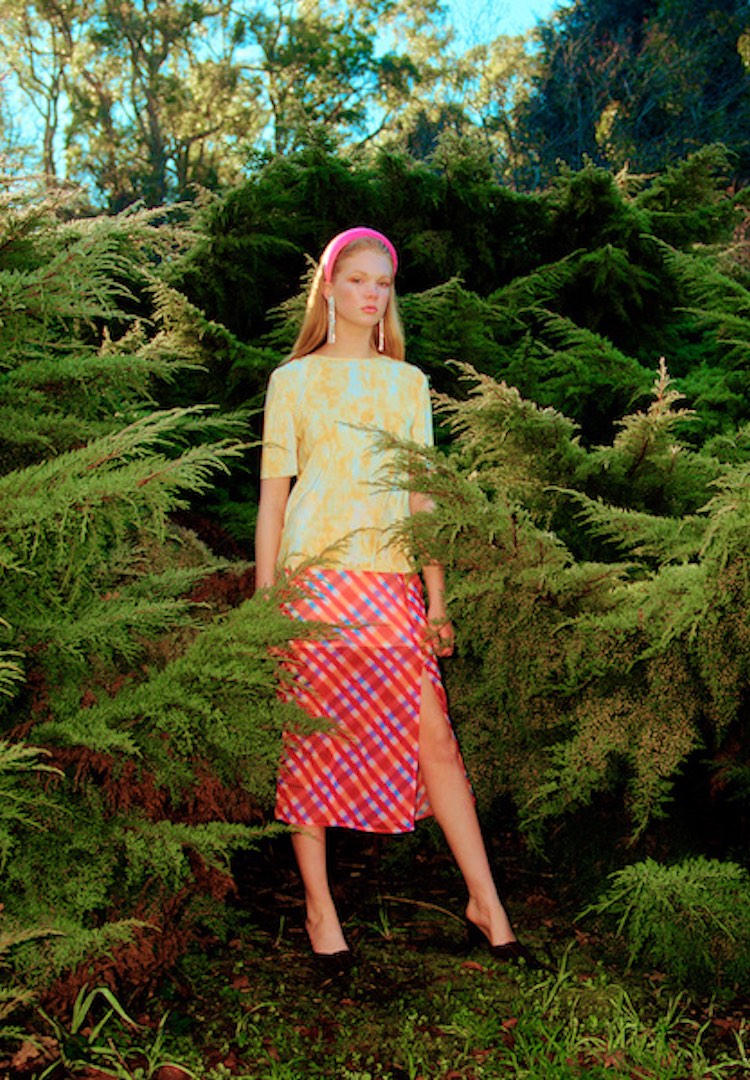Why isn’t fashion sustainability taught in Australian schools?
IMAGE VIA @TORYBURCH/INSTAGRAM
Words by Amanda Gunn
Fashion is the second-largest polluter in the world, after all.
I try to shop sustainably where possible, so you can imagine my surprise when a Shein parcel was delivered to my doorstep. Immediately I thought they had the wrong address, but it wasn’t long before my little sister Gemma ran to the door to collect her package.
Being a little bit overdramatic, I told her supporting fast fashion was the worst thing she could do. To a ten-year-old, that doesn’t make a lot of sense. I mean, she was just excited about her new butterfly crop-top.
Check out how these brands are working towards sustainability.
Despite my outstanding acting skills, I realised this was no time for a theatre performance. Instead, I explained some of the negative impacts of the fast fashion industry to Gemma. I told her how the fashion industry is the second largest polluter in the world and how 85 per cent of the textiles we buy in Australia ends up in landfill.
I explained that not only does the industry have enormous impacts on the environment, but garment makers are often not paid a living wage, and frequently make less than three dollars a day. She was shocked that it operated like this. To her it was simple, and as she put it, “Brands should make the clothes better for the environment and treat their workers right.”
Eager to know more about how brands treat their workers and where sustainable design can improve, she was engaged with the topic and asking lots of questions. So why was this information so foreign to her? She learns about sustainability in school, but it seems that the impact of the fashion industry is completely left out of the equation.
Of course, the fashion industry is not all bad. A recent report by the Australian Fashion Council revealed that the industry employs 489,000 people and adds $27.2 billion to the Australian economy. So instead of ignoring the problem, why not focus on educating our youth on how to improve this industry and their purchasing choices?
Australia does encourage sustainability programs in schools, and the topic itself is part of the Australian curriculum. But, as the Associate Professor in the Faculty of Education at Monash University, Alan Reid, and the Sustainable Environment Leader and Specialist at Mount Waverly Primary School, Lorreta Leary, explain to me, this isn’t always enough.
Fortunately, Lorreta is teaching her students at Mount Waverly Primary School how to be eco-citizens of the world, and this includes discussions centred around fashion. Aspiring to one day live on a farm and potentially develop an ethically sourced school uniform, she reveals to me how specialist classes can promote in-depth sustainable education.
While teaching about sustainability is encouraged, “It comes down to time. If schools don’t have a specialised sustainability subject, it makes it hard to teach. I believe that it is imperative for more schools to incorporate this into their education,” she tells me.
With a range of recycling systems and specialised gardens, Loretta says that Mount Waverly embeds all areas of sustainability into education, including fashion. “We discuss [fashion] in terms of material waste and have a materials recycling hub. We discuss fast fashion with the older students as well.”
She also highlights the need for sustainable education to continue beyond primary school, particularly as this is when many of them will first start making purchases for themselves, with money earned from part-time jobs or pocket money. “The students form good habits in primary school and high school is the time when the knowledge should be reinforced,” she says.
While Lorretta and the team at Mount Waverly are heading in the right direction, Professor Alan believes the wider lack of awareness around sustainable fashion in schools stems from “disconnects and missed opportunities in the curriculum”.
Leading a variety of environmental and sustainability education projects and research papers, Alan emphasises how integrating fashion sustainability across all areas of the curriculum can provide a holistic understanding of climate change.
Teaching sustainability is important as “it is not innate to care for the planet. Schools and universities can help break cycles of unsustainability,” he explains. And with future generations responsible for sustainable development, it’s essential students understand how their actions impact the environment.
“It is all about minimising the effect of our actions on future generations. Fast fashion and waste mountains can be changed to help this, so understanding the fashion cycle can help people be more sustainable,” he explains.
He points out that fashion is a fertile area where critical thinking can be shown. “Asking questions like, ‘What am I wearing today?’, ‘Who made it?’, ‘Is this what I want to support?’ can be the start of a learning journey.”
With Gen Z and the generations below more concerned with social and environmental issues than those who came before them, Professor Alan believes it’s important that the true impact of fashion is openly discussed.
“Lots of young people are beginning to question the systems they have inherited. People have a sense of urgency and want to make a difference. With fashion, when people realise that they can express themselves in other ways, that raises questions on how to make things fair and less impactful to the environment.”
He encourages people to disrupt traditional systems and even adopt skills from the past. For example, “talking to grandparents about how to make clothes can see the industry become more personal and compassionate”.
He also notes the power of technology and social media in advocating for and supporting change in the industry. “Depop is something that wouldn’t have been possible 50 years ago and allows people to recycle clothes rather than buying new. [And] an influencer raising questions about fast fashion online can be more effective than a thirty-minute talk in school.”
Importantly, he emphasises that sustainable education doesn’t have to be boring – making it interesting and engaging is key.
“Interdisciplinary work and seeing how certain things compound others can engage us more. Connecting together the science of particular fibres, effects of globalisation, how laws are made, economic aspects and careers in fashion are all different touchpoints that schools can foster to intertwine fashion with education.
“If education was largely about care, what we do and don’t consume are of educational question. Making issues focused allows people to become more well served. For example, understanding that textile mills are exposed to toxins, there is an understanding [for the students] that it’s bad for workers and the environment.”
While many schools are yet to teach their students about sustainable fashion, it’s clear that the lessons regarding sustainability can encompass clothing, too, and showcasing local sustainable brands that are creating positive change could be powerful for students to see.
Teaching the younger generations to think critically about our culture of overconsumption will (hopefully) encourage more thoughtful purchasing and a more holistic understanding of the industry’s impact on our environment.
Head here to see how improving the fashion industry can positively impact the environment.










